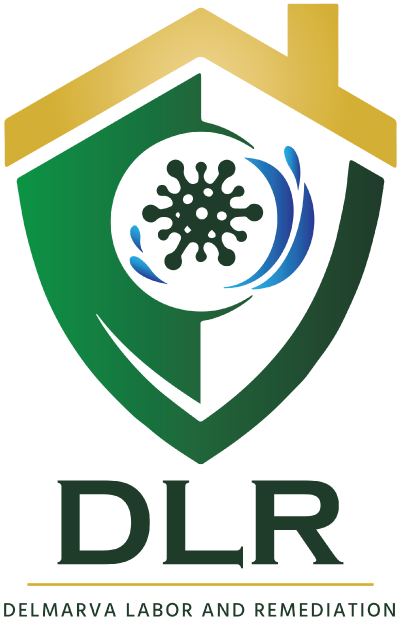Mold Remediation
Q1: What is mold remediation?
A1: Mold remediation refers to the process of removing and preventing the spread of mold in indoor environments. It involves identifying and addressing the source of moisture, containing the affected area, removing the mold growth, and cleaning and treating surfaces to prevent future mold growth.
Q2: Should I Test For Mold?
A2: The Delaware Division of Public Health does not routinely recommend testing
for mold. Instead, you should simply assume there is a problem whenever you
see mold or smell mold odors. Testing should never take the place of visual
inspection and it should never use up resources that are needed to correct
moisture problems and remove all visible growth.
Q3: How does mold growth occur?
A3: Mold growth occurs when moisture, oxygen, and an organic food source are present. Common sources of moisture include water leaks, high humidity, condensation, or flooding. Mold can grow on various surfaces such as walls, ceilings, carpets, and even hidden areas like behind drywall or under flooring.
Q4: Can I remove mold myself?
A4: Small mold infestations (less than 10 square feet) that are on non-porous surfaces can often be safely cleaned by homeowners using appropriate personal protective equipment (PPE) and cleaning solutions. However, larger or extensive mold growth, as well as mold on porous materials like drywall or carpet, should be handled by professional mold remediation experts.
Q5: Are there health risks associated with mold exposure?
A5: Yes, exposure to mold can cause various health issues. Mold spores can trigger allergies, respiratory problems, asthma attacks, and irritate the eyes, skin, and throat. People with weakened immune systems or existing respiratory conditions may be more susceptible to mold-related health effects.
Q6: How long does mold remediation take?
A6: The duration of mold remediation depends on several factors, including the size and severity of the mold problem, the type of mold present, and the extent of the damage. Small-scale remediation projects may take a few days, while larger or complex cases could take several weeks. It’s essential to prioritize thoroughness and ensure the underlying moisture issue is resolved to prevent future mold growth.
Please note that while these answers provide general information about mold remediation, it’s always recommended to consult with a professional mold remediation specialist for specific advice regarding your situation.
Mold Testing
Q1: Why is mold testing necessary?
A1: Mold testing is conducted to determine the presence, type, and concentration of mold in indoor environments. It helps identify if mold growth is present, even if it’s not visible, and assesses the extent of the contamination. Testing can also help determine the effectiveness of mold remediation efforts.
Q2: How is mold testing conducted?
A2: Mold testing can be performed using various methods, including air sampling, surface sampling, and bulk sampling. Air sampling collects airborne mold spores by using air pumps or specialized devices. Surface sampling involves collecting samples from visible mold growth or suspected contaminated surfaces. Bulk sampling entails collecting physical pieces of material, such as drywall or carpet, for analysis.
Q3: Can I test for mold myself?
A3: While DIY mold testing kits are available, it’s generally recommended to hire a professional mold testing service for accurate and reliable results. Professionals have the expertise, experience, and proper equipment to collect samples correctly and interpret the results accurately.
Q4: Is mold testing necessary if mold is visible?
A4: Visible mold growth is a clear indicator of a mold problem and often requires remediation. In such cases, mold testing may not be essential for addressing the immediate issue. However, testing can still be beneficial to identify the specific type of mold present and determine if it poses any health risks.
Q5: How long does mold testing take?
A5: The duration of mold testing depends on the scope of the testing being conducted. Typically, it can take a few hours to a few days, depending on the number of samples collected and the specific testing method used. The time required for analyzing the samples in a laboratory can vary as well.
It’s important to note that mold testing should be carried out by qualified professionals who can interpret the results accurately and provide appropriate recommendations based on the findings.
Additional:
Q: What is IICRC and why is it important to pick a company with IICRC Certification?
A: The IICRC refers to the Institute of Inspection Cleaning and Restoration Certification. Headquartered in Las Vegas, the IICRC is a professional certification coalition that — in addition to providing training — sets best-practice standards for the restoration, cleaning and inspection industries.
When a technician is IICRC-certified, it means that they’ve satisfied all of the core competencies necessary to be a true carpet cleaning, water damage restoration and/or inspection professional.IICRC certification can give you the technical skills, qualifications, and expertise your customers expect, so you can do the job right.
When it comes to performing cleaning and restoration services for a home or business, there’s a world of difference between getting a job done and getting a job done right. But how do you know what “right” is? Well, if you’re in the cleaning and restoration industry, the answer is training and certification through the IICRC.

